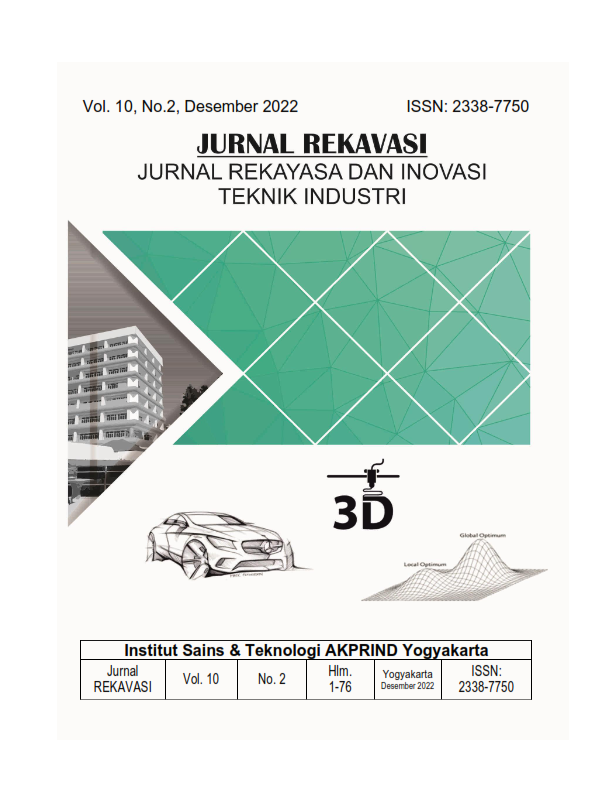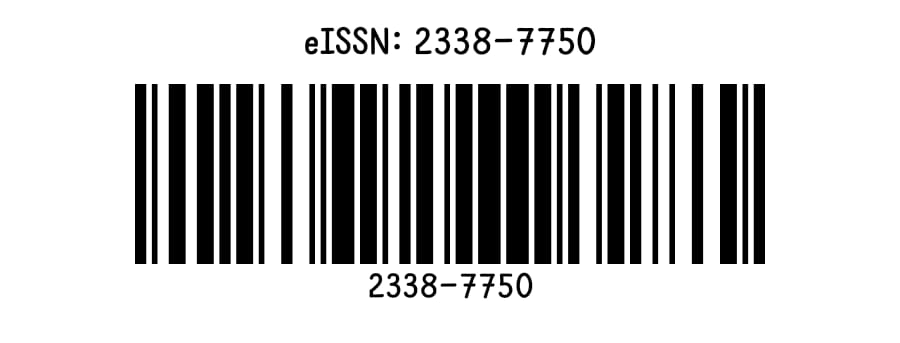PENGEMBANGAN NEURAL NETWORK UNTUK PREDIKSI KUALITAS AIR
DOI:
https://doi.org/10.34151/rekavasi.v10i2.4014Keywords:
klasifikasi, kualitas air, jaringan saraf tiruan, akurasi prediksi, jumlah neuronAbstract
Research on artificial intelligence to determine water quality has been widely developed as a human endeavor to
improve the quality of life. This study employs an artificial neural network (ANN) to determine the optimal
classification model for determining the safety of water. This study uses existing Kaggle generic datasets. Numerous
preprocesses were performed on the dataset starting from cleaning the data from missing values and outliers to
equalizing the weights of each parameter with the min-max scaler. This study compares the accuracy of ANN model
in various scenarios constructed with 10, 15, 20, and 30 neurons. Scaled Conjugate Gradient is implemented as the
learning algorithm for developing the prediction model. The obtained results of the experiments vary between
scenarios. Overall accuracy increases when the number of neurons is between 10 and 20, and decreases when the
number of neurons is between 20 and 30.
References
Ahmed, A. N., Othman, F. B., Afan, H. A., Ibrahim, R. K., Fai, C. M., Hossain, M. S., & Elshafie, A. (2019). Machine learning methods for better water quality prediction. Journal of Hydrology, 578, 124084.
Bappenas. (2020). Rencana Pembangunan Jangka Menengah Nasional 2020-2024. Peraturan Presiden Republik Indonesia Nomor 18 Tahun 2020.
Bui, D. T., Khosravi, K., Tiefenbacher, J., Nguyen, H., & Kazakis, N. (2020). Improving prediction of water quality indices using novel hybrid machine-learning algorithms. Science of the Total Environment, 721, 137612.
Chen, K., Chen, H., Zhou, C., Huang, Y., Qi, X., Shen, R., ... & Ren, H. (2020). Comparative analysis of surface water quality prediction performance and identification of key water parameters using different machine learning models based on big data. Water research, 171, 115454.
Mssmartypants. (2021). Water Quality. Kaggle. https://www.kaggle.com/datasets/mssmartypants/water-quality
Lu, H., & Ma, X. (2020). Hybrid decision tree-based machine learning models for short-term water quality prediction. Chemosphere, 249, 126169.
Prambudi, D. A., & Febrianti, N. (2022). Penerapan Artificial Neural Network pada Prototyping Sistem Monitoring Kualitas Air di Kota Balikpapan untuk Mendukung Balikpapan sebagai Smart City. Jurnal Teknologi Informasi: Jurnal Keilmuan dan Aplikasi Bidang Teknik Informatika, 16(1), 30-38.
Singh, K. P., Basant, A., Malik, A., & Jain, G. (2009). Artificial neural network modeling of the river water quality—a case study. Ecological modelling, 220(6), 888-895.
Sulaiman, K., Ismail, L. H., Razi, M. A. M., Adnan, M. S., & Ghazali, R. (2019, August). Water quality classification using an Artificial Neural Network (ANN). In IOP Conference Series: Materials Science and Engineering (Vol. 601, No. 1, p. 012005). IOP Publishing.
Sarkar, A., & Pandey, P. (2015). River Water Quality Modelling Using Artificial Neural Network Technique. Aquatic Procedia, 4, 1070-1077. doi: 10.1016/j.aqpro.2015.02.










